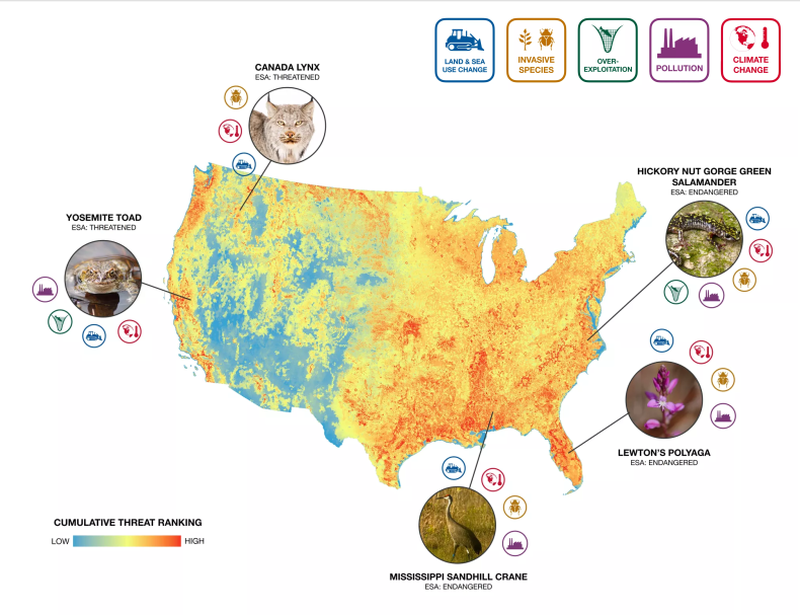

Scientists are documenting an unprecedented decline in global biodiversity, mainly driven by human-related activities: land- and sea-use change, climate change, pollution, invasive species, and overexploitation. Although science has helped to identify the major threats at the global scale, there are gaps in our understanding of their potential impact in the United States. Defenders of Wildlife’s Center for Conservation Innovation examined the threat that these global drivers pose to U.S. species listed under the Endangered Species Act and some of the areas on which they rely. The 2023 report showed that 99% of listed species are threatened by at least one of the five drivers of the global crisis, with climate change endangering the greatest number of them. Nearly half of areas of highest biodiversity importance in the contiguous U.S. face the greatest threats. Currently underway, the first National Nature Assessment can create a more comprehensive understanding of the current and future state of the nation’s biodiversity as well as the opportunities for tackling the crisis here at home. Click the following links for a summary of the report and supplemental information.